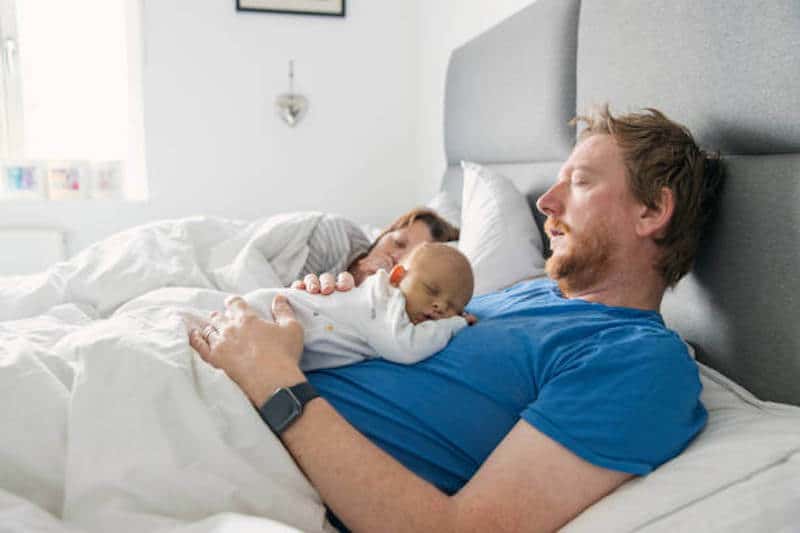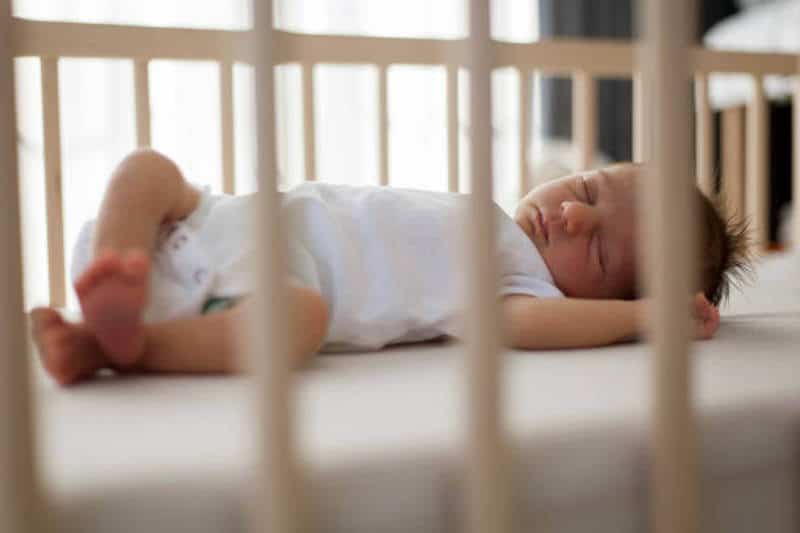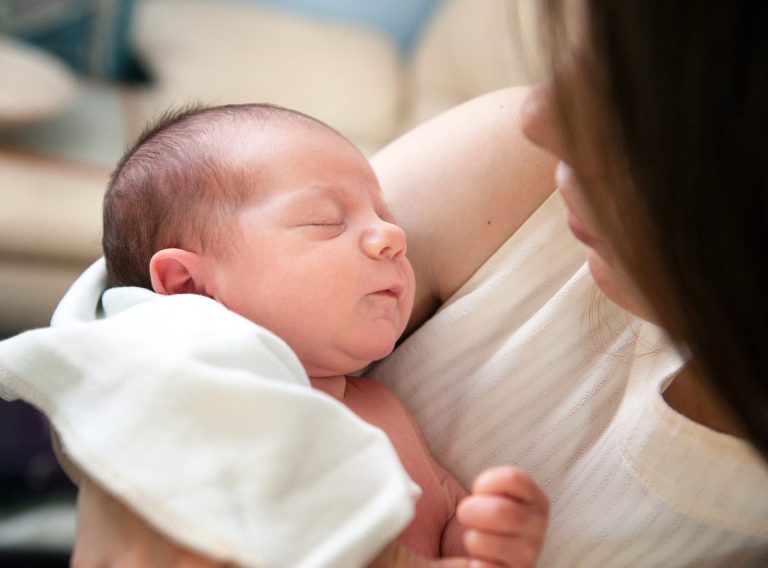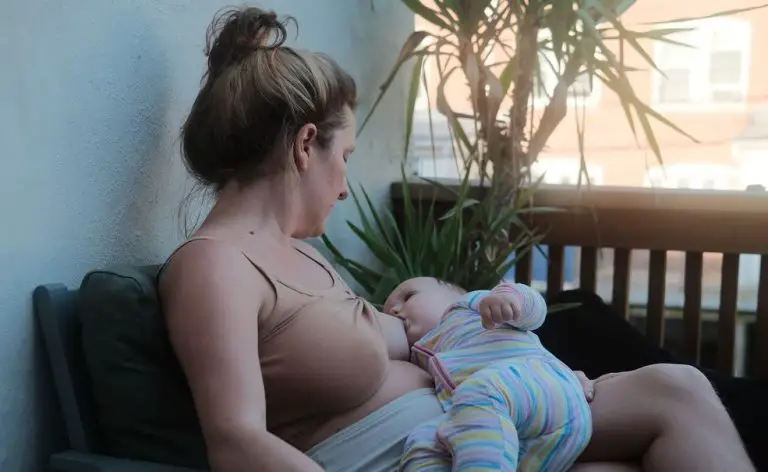The Dangers Of Co-Sleeping: Myths And Facts
Are you considering co-sleeping with your child? It’s a common practice that many parents turn to for convenience, bonding, and comfort. However, there are risks associated with co-sleeping that you should be aware of before making a decision.
Myths about co-sleeping have circulated for years, leading some parents to believe it’s safe and natural. But the truth is, there are potential dangers such as suffocation, Sudden Infant Death Syndrome (SIDS), and accidents caused by adult movements during sleep.
Note: This post may contain affiliate links, which means if you buy from my link I might make a small commission. This does not affect the price you pay. See the full affiliate disclosure here.
In this article, we’ll explore the myths surrounding co-sleeping and provide facts backed by research so that you can make an informed decision about what’s best for your family.

The Risks Associated with Co-Sleeping
You may not realize the potential risks of sharing your bed with your baby, but it’s important to understand the factors that can make co-sleeping dangerous.
One of the biggest risks associated with co-sleeping is SIDS (Sudden Infant Death Syndrome) prevention. Although there are some studies suggesting that co-sleeping reduces the risk of SIDS, other studies show that it increases the risk. This is especially true for parents who smoke or use drugs or alcohol.
Another factor to consider when weighing the risks and benefits of co-sleeping is cultural differences. In many cultures around the world, co-sleeping is a common practice and has been for centuries. However, in Western societies, where crib sleeping is more prevalent, there can be a lack of education and understanding about safe co-sleeping practices.
It’s important to do your research and talk to healthcare professionals before deciding what sleeping arrangement works best for you and your baby.
Separation Anxiety and Emotional Development
As you read about separation anxiety and emotional development, you’ll discover how important it is to consider your child’s unique needs when making sleeping arrangements.
Co-sleeping can have a negative impact on your child’s emotional development, particularly in the area of parental bonding. When children sleep with their parents every night, they may develop an unhealthy dependence that makes separating from their parents more difficult as they grow older. This can lead to separation anxiety and other emotional issues.
Sleep training is an effective way to reduce the risk of separation anxiety in children who co-sleep. By teaching your child to fall asleep on their own, you can help them develop a sense of independence and self-reliance that will benefit them throughout their lives.
While some parents worry that sleep training will damage their relationship with their child or cause undue stress for both parent and child, research has shown that the opposite is true – sleep training can actually strengthen the bond between parent and child by creating a healthy sleep routine that benefits everyone involved.

Sleep Quality and Overall Well-Being
Improving your child’s sleep quality can have a positive impact on their overall well-being and set them up for success in all areas of life. Sleep hygiene is crucial to ensure that your child gets adequate rest, which is essential for optimal physical and mental development.
Here are four ways to improve your child’s sleeping habits:
- Set a consistent bedtime routine: Establishing a predictable bedtime routine can help signal to your child’s body that it’s time to wind down and prepare for sleep.
- Limit screen time before bed: Blue light emitted by electronic devices can interfere with the production of melatonin, the hormone responsible for regulating sleep-wake cycles.
- Create a comfortable sleep environment: Ensure that your child’s bedroom is cool, quiet, and dark.
- Encourage physical activity during the day: Regular exercise can help promote better-quality sleep.
By implementing these strategies, you can help support healthy sleeping habits in your child, which will ultimately lead to improved overall well-being.
Alternatives to Co-Sleeping
If you’re looking for alternatives to co-sleeping, there are several options that can help keep your baby safe and close at the same time.
Room-sharing is one of the most popular alternatives, where your baby sleeps in a separate crib or bassinet next to your bed. It’s important to follow safe sleep practices like laying your baby on their back and avoiding soft bedding or loose objects in the sleeping area.
Additionally, breastfeeding has been shown to reduce the risk of SIDS and can also promote bonding between you and your baby.
Room-Sharing
Sharing a room with your baby can make nighttime feedings and diaper changes easier, while still allowing them to have their own sleep space. Room-sharing is recommended by the American Academy of Pediatrics (AAP) as a safer alternative to co-sleeping.
It reduces the risk of Sudden Infant Death Syndrome (SIDS) by up to 50%, according to research.
When setting up your baby’s sleeping area in your room, ensure that they have their own safe sleep space such as a crib or bassinet, which should be placed at least three feet away from your bed. Avoid placing any soft objects like blankets, pillows, or toys in their sleeping area as these create suffocation hazards for infants.
Also, keep the temperature in the room comfortable and dress your baby in appropriate clothing for warmth without overheating them.
By practicing safe room-sharing habits, you can provide a comfortable and secure sleeping environment for your baby while also making nighttime parenting tasks more manageable.
Safe Sleep Practices
To keep your baby safe while sleeping, make sure to follow these simple guidelines for safe sleep practices.
First and foremost, it’s important to understand the difference between bed sharing and room sharing. Bed sharing refers to sleeping in the same bed as your baby, while room sharing means placing the baby’s crib or bassinet in your bedroom.
The American Academy of Pediatrics recommends room sharing for at least six months but advises against bed sharing due to an increased risk of suffocation or Sudden Infant Death Syndrome (SIDS).
It’s understandable that some parents may have concerns about having their baby sleep alone in a separate room. However, it’s important to prioritize safety over cultural traditions or personal preferences.
To ease parental concerns, consider investing in a high-quality baby monitor that allows you to hear and see your baby from another room.
Additionally, make sure to place your baby on their back for every sleep and avoid using soft bedding or pillows that could obstruct their breathing.
By following these guidelines for safe sleep practices, you can ensure that your little one gets a good night’s rest while staying protected from potential hazards.

Breastfeeding
Breastfeeding is a crucial aspect of infant care that provides numerous benefits for both the baby and mother. When it comes to co-sleeping, breastfeeding can help facilitate the bonding experience between mother and child.
Here are some benefits and challenges of breastfeeding during co-sleeping:
Benefits:
- Breastfeeding releases hormones that promote relaxation and sleep, which can benefit both the mother and baby.
- Co-sleeping allows for easy access to breastmilk throughout the night, making feeding more convenient for both mother and baby.
- Breastfeeding while co-sleeping promotes skin-to-skin contact, which can enhance emotional bonding.
Challenges:
- Mothers may feel pressured to stay awake all night to ensure their child’s safety during co-sleeping, leading to exhaustion and potential health risks.
- There is a risk of accidental suffocation if the baby is positioned incorrectly or if there are blankets or pillows in the sleeping area.
- Some mothers may struggle with finding a comfortable position for themselves while breastfeeding in bed.
It’s important to weigh both the benefits and challenges when considering breastfeeding during co-sleeping. Ultimately, every family must make their own decision based on what works best for them.
Making an Informed Decision
Before you decide whether or not to share your bed with your baby, it’s important to fully understand all the information presented in this section. While co-sleeping can be a bonding experience for both you and your baby, it also comes with risks that shouldn’t be taken lightly.
It’s crucial to weigh the pros and cons and consider parental preferences before making a decision. To make an informed decision, you need to understand the facts about co-sleeping. Research has shown that infants who sleep in the same bed as their parents are at an increased risk of suffocation, SIDS (Sudden Infant Death Syndrome), and accidental injury such as being rolled over on.
However, there are safe ways to co-sleep that can minimize these risks. For example, placing your baby on their back on a firm surface without pillows or blankets can decrease the likelihood of suffocation. Ultimately, it’s up to each individual parent to decide what works best for them and their family while prioritizing their child’s safety above all else.
Conclusion
In conclusion, co-sleeping can pose significant risks to both parents and infants. Sudden Infant Death Syndrome (SIDS), suffocation, and accidental overlay are just a few of the potential dangers associated with this practice.
While some may argue that co-sleeping promotes emotional bonding and better sleep quality, these claims haven’t been fully substantiated by research.
It’s important to consider all available information when making decisions about whether or not to co-sleep with your child. Ultimately, the safety and well-being of your family should be the top priority.
Consider alternative sleeping arrangements such as a bedside bassinet or crib in close proximity to your bed. Always consult with your healthcare provider for guidance on safe sleep practices for infants.






